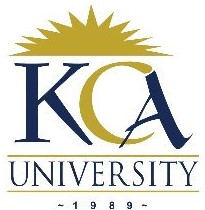
UNIVERSITY EXAMINATIONS: 2017/2018
EXAMINATION FOR THE DEGREE OF BACHELOR OF SCIENCE IN
INFORMATION TECHNOLOGY / BACHELOR OF BUSINESS INFORMATION
TECHNOLOGY / BACHELOR IN APPLIED COMPUTING / BACHELOR IN
INFORMATION AND COMMUNICATION TECHNOLOGY
BIT1205 BBIT104 BCT2101 SYSTEMS ANALYSIS AND DESIGN
FULL TIME/PART TIME/DISTANCE LEARNING
DATE: APRIL, 2018 TIME: 2 HOURS
INSTRUCTIONS: Answer Question One & ANY OTHER TWO questions.
QUESTION ONE
a) Discuss why System Analyst is a very important person in Information System development
(2 Marks)
b) Explain FOUR categories of information systems (4 Marks)
c) Differentiate between functional and non-functional requirements (2 Marks)
d) Read and understand the following narrative description.
The purpose of the TEXTBOOK INVENTORY SYSTEM at a campus bookstore is to supply
textbooks to students for classes at the local university. The university’s academic departments
submit initial data about courses, instructors, textbooks and project enrollments to the bookstore on a
TEXTBOOK MASTER LIST. The bookstore generates a PURCHASE ORDER, which is sent to the
publishing companies supplying textbooks. Book orders arrive at the bookstore accompanied by a
PACKING SLIP, which is checked and verified by the receiving department. Students fill out a
BOOK REQUEST that includes course information. When they pay for their books, the students are
given a SALES RECEIPT.
Required: Draw a context DFD for the portion of the narrative described below. (6 Marks)
e) Differentiate between the terms Information Systems (IS) and Information Technology(IT)
(2 Marks)
f) Explain FIVE system stake-holders for a Hotel management system (5 Marks)
g) Define the following terms as used in Systems Analysis and Design.
i. Prototype
ii. Interface (3 Marks)
QUESTION TWO
a) Explain FOUR tools that the system analyst need to utilize during project costing (8 Marks)
b) Explain THREE characteristics of a good software. (3 Marks)
c) Software designing is faced by many unique challenges, advice a young programmer some of the
challenges likely to be encountered. (6 Marks)
d) Differentiate between alpha and beta tests (3 Marks)
QUESTION THREE
a) Different kinds of computer projects require different approaches to the development processes.
Discuss the factors that may be considered before choosing the appropriate lifecycle.
(5 Marks)
b) Discuss the following software process models:
i. V model
ii. Dynamic system development model (DSDM)
iii. Spiral model (9 Marks)
c) System security is vital. Explain the THREE main elements of system security (6 Marks)
QUESTION FOUR
a) Describe FOUR types of system testing (4 Marks)
b) Explain THREE principles of developing a user centered design (6 Marks)
c) Define the following terms (4 Marks)
i. Risk Management
ii. Configuration Management
d) Explain TWO attributes of good software. (2 Marks)
e) With the aid of examples, describe FOUR type of system maintenance. (4 Marks)
QUESTION FIVE
Most modern development methods encourage iteration throughout the development process. This
contrasts with the “waterfall” approach taken by older methods.
a) Briefly explain what is meant by “iteration” in software development? What benefits does it offer?
What is produced during iteration? (7 Marks)
b) What are visual models and how are they used in Information Systems Development?
(3 Marks)
c) Explain THREE benefits of designing programs in a modular way (6 Marks)
d) Describe what CASE is, explaining the various types of support it provides (4 Marks)
QUESTION SIX
Users, clients and developers may be expected to disagree in the nature and causes of problems in
information systems development.
a) Briefly explain the types of problem each stakeholder is likely to identify and the reasons they might
disagree. (10 Marks)
b) How do modern approaches to systems development attempt to avoid these problems?
(10 Marks)
